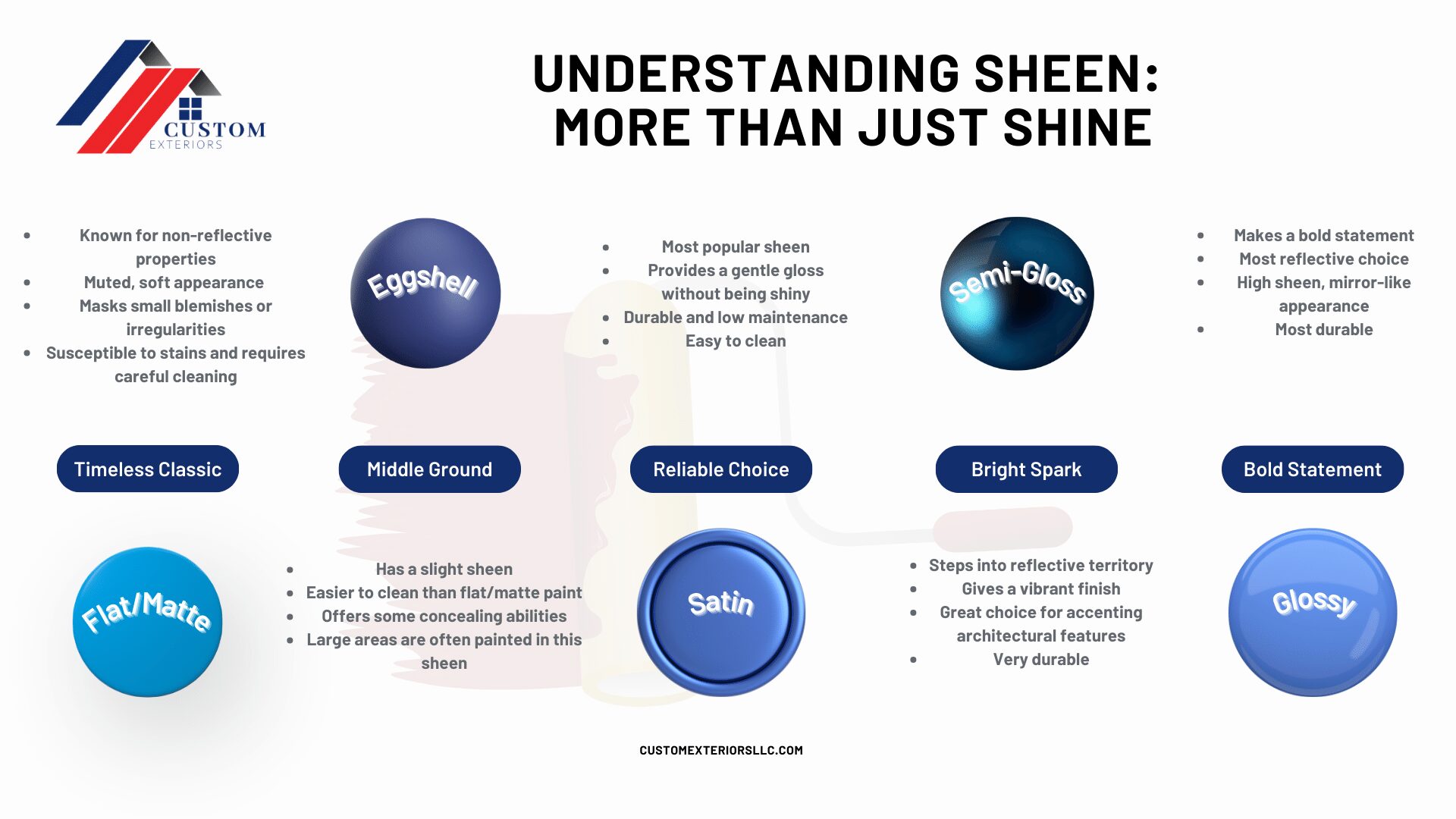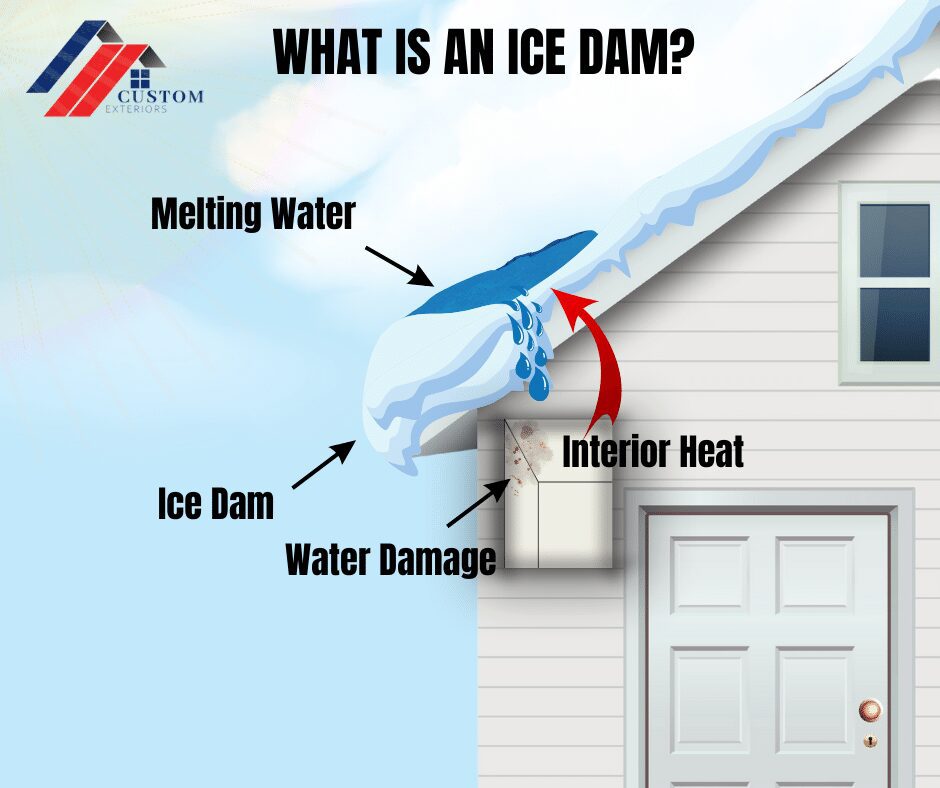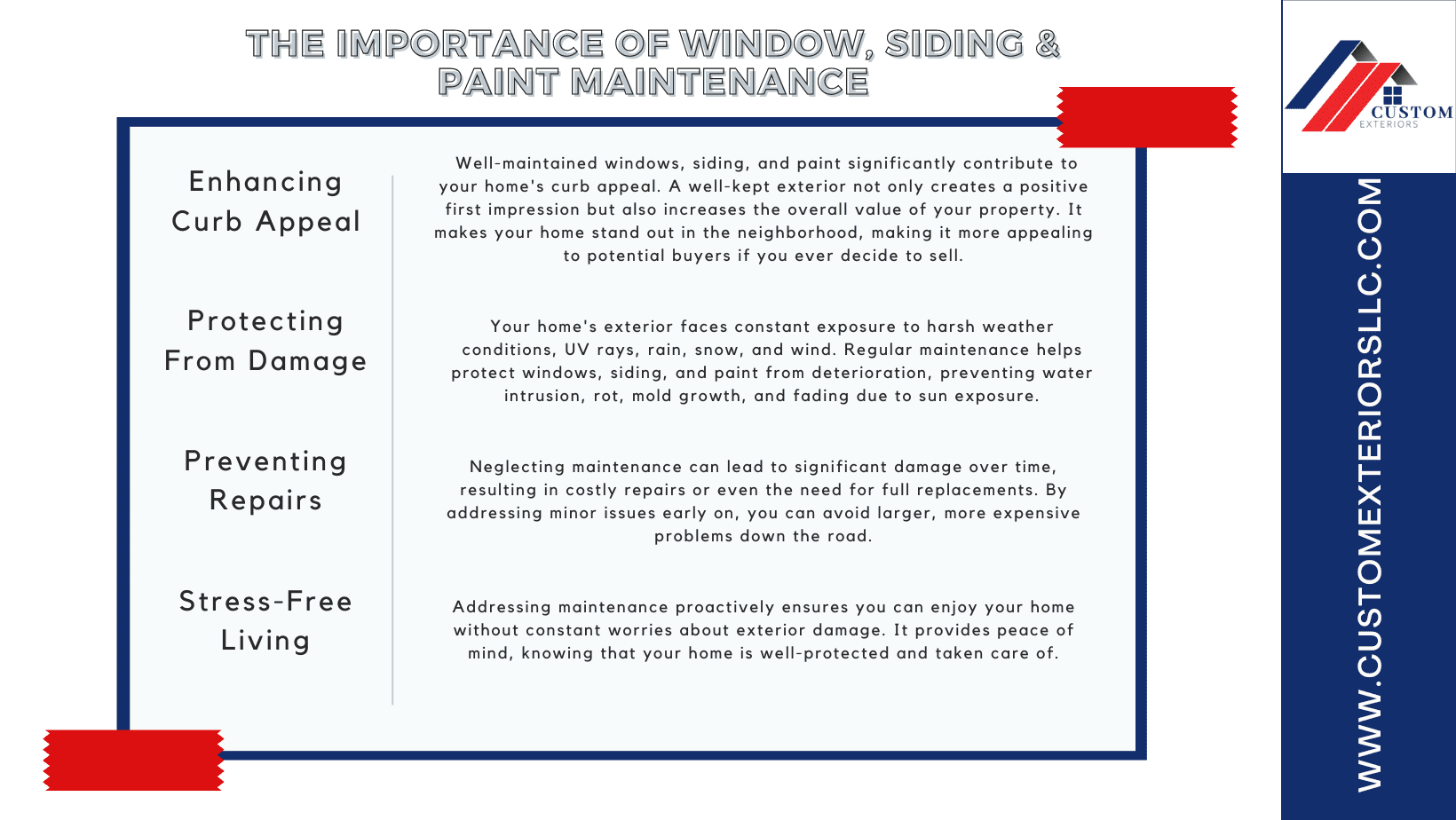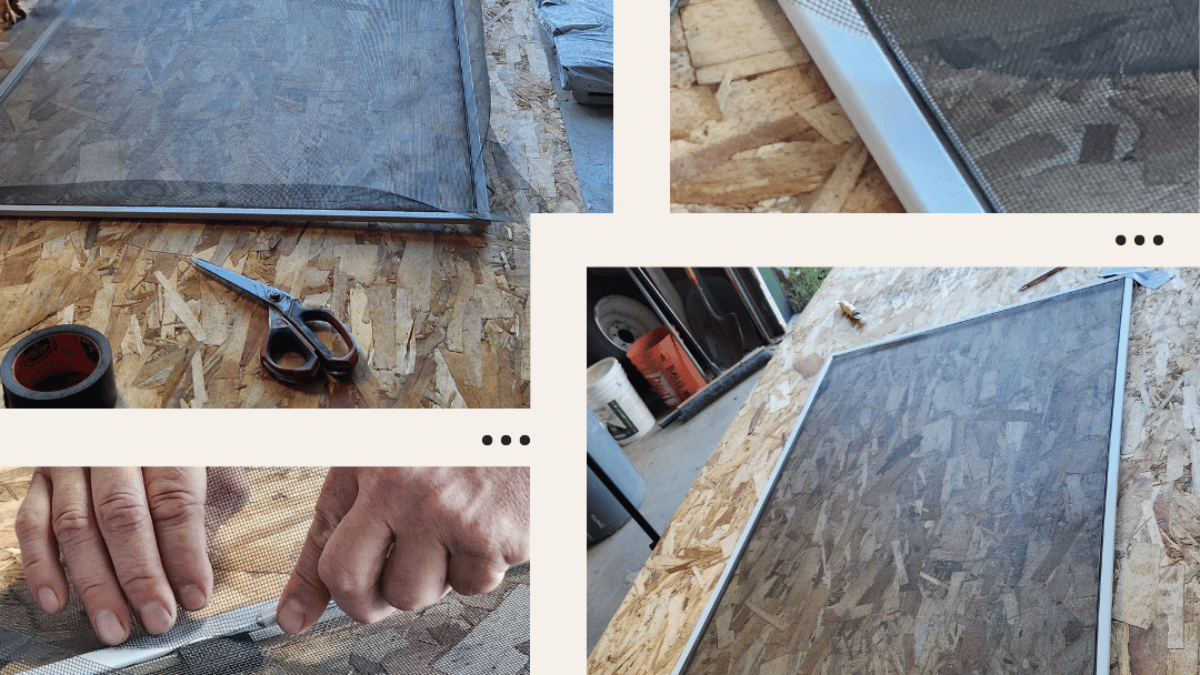A simple guide to choosing replacement windows
You knew this day was coming, and here it is; it’s time to replace the windows in your home. If you are anything like I was, you want to get it done cheaply and never think about it again. When I replaced the windows in the first home I bought, it was an expense I didn’t have the money or the time for. I also put little thought into the process other than how much I would have to scrounge together to pay for them. Fast forward 20+ years, and I am in the exterior remodeling industry. I look back on that choice, knowing I missed an opportunity to make that tiny home my own. With unlimited window styles, colors, and materials available, replacing your old windows with modern replacements can dramatically affect your home’s curb appeal.
While they are often overlooked, your windows are one of the most important systems in your home. They let in light, lowering your need for electricity, and can provide incredible views from the comfort of your living room. Being from Colorado, the protection they provide from the outside elements is a crucial factor to consider when replacing windows. Old and damaged windows can also be drafty, a safety hazard, and contribute to higher heating and cooling costs. As your windows age, just like every system, they lose some of their function. In addition to that, new technology makes modern windows an energy efficient option! If you are considering replacing your windows, you might have questions regarding costs, energy efficiency, style options, and more. So, let’s learn what it takes to choose the right replacement windows for your home. We are here to cover:
- What are the most important things to look for in replacement windows?
- What is a realistic price range for replacement windows?
- When is a window repair more appropriate than a window replacement?
- What are signs your current windows need replaced?
- How to find the best window replacement contractor?
- What are the most important factors to consider when choosing replacement windows?
How much does window replacement cost?
It is common for the first question we get when meeting with a customer about replacement windows to be: How much will they cost? It would be great if there were a straightforward way to answer this question without more information. However, that isn’t the case. Window prices vary based on the window size, the material used, additional security features, specialty glass and glazings, and more. The average price you can expect to pay typically falls between $700 and $2000 per window but can be higher for larger, high-end installations. This cost is not set in stone and can fluctuate. It’s safe to assume that small, standard-sized windows will be substantially less expensive than larger, customized options.
Factors influencing window replacement costs
- The style and type of window you choose can significantly impact the cost.
- The material of your new windows can impact the pricing, with vinyl typically being the most budget-friendly option.
- You can expect the cost to increase if you opt for extras such as energy-efficient glass, decorative grilles, or unique finishes.
- If your window replacement requires extensive structural work or adjustments, it can add to the overall costs.
- Window replacement costs can vary from one area to another due to differences in labor and material pricing.
- The total number of windows you're replacing will obviously affect the overall cost.
Where can I get an accurate Idea of my replacement costs?
To get an accurate estimate for your window replacement project, it’s essential to contact reputable window replacement contractors in your area. Look for a window company with a skilled and knowledgeable team. They should be able to identify the specific needs of your property, meet your energy-efficiency goals, and provide you with a clear and detailed estimate of the replacement cost.
While cost is an important factor, it’s also crucial to consider the long-term benefits of energy-efficient windows. They can lower your energy bills, increase the comfort of your home, and boost its resale value. So, when considering a window replacement, it’s a balancing act between keeping your short-term costs as low as possible and considering the long-term benefits of more customized windows.
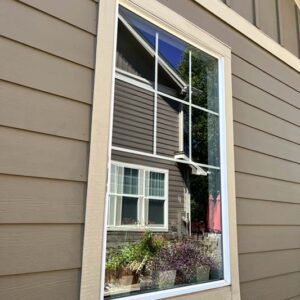

Repair or replace: what's the right choice for you?
Considering the cost of replacing windows, choosing between repair and replacement is a valid question when you start having issues with your current windows. After all, if your current windows are functioning properly and newer than ten years old, a repair could save thousands over a replacement. However, a window “repair” that is not successful can lead to much larger problems, including water damage and mold growth. The decision hinges on several factors, and understanding them can help you make an informed choice. Things to consider when deciding between window replacement and window repairs:
1. Window Age:
Consider how old your existing windows are. Repairs might be sufficient if they’re relatively new and the issues are minor. On the other hand, if your windows are reaching or surpassing their expected lifespan (typically 20-25 years), it might be time for a complete replacement.
2. Extent of damage:
Assess the extent of the damage to your windows. Small issues like a broken latch or minor air leak can often be repaired effectively and within a reasonable budget. However, replacement is likely the more practical choice if the damage is extensive, such as rot, warping, or multiple broken panes.
3. Impact on Curb appeal:
Windows often play a significant part in your home’s appearance. With this in mind, it’s essential to consider their impact on your home’s curb appeal. Repairs may only partially restore the original look, especially if you’re dealing with extensive damage or mismatched materials. In such cases, a replacement can provide a fresh, cohesive appearance.
4. Energy efficiency:
Older windows are rarely as energy-efficient as modern ones. Look at your windows if you notice drafts, condensation between the panes, or increased energy bills. Those may be signs that your windows are no longer doing an excellent job of insulating your home. Replacing them with energy-efficient options can lead to long-term savings and improved comfort.
5. Long-term investment & Cost comparison
Consider your long-term plans for your home. If you plan to stay in your current residence for many years, investing in high-quality replacement windows can be wise. They offer better insulation, durability, and energy savings, making your home more comfortable and potentially increasing its resale value. While repairs can be more affordable upfront, weighing this against the long-term benefits of replacement is essential. New, energy-efficient windows may lead to substantial savings on heating and cooling costs over time.
Consulting a professional:
When in doubt, consulting with a window replacement professional is always a good idea. They can assess the condition of your windows, discuss your goals and budget, and provide expert guidance on whether repair or replacement is the best choice for your specific situation. The decision to repair or replace your windows depends on factors such as their age, the extent of damage, energy efficiency, curb appeal, long-term plans, and cost-considerations. By carefully evaluating these factors and seeking professional advice when needed, you can make a well-informed decision that ensures your home’s comfort, appearance, and efficiency.
Pro Tip

Did you know that a chipped or broken window frame is typically covered under a hail damage claim, depending on coverage? After a hail storm, check the frames of your windows for damage. Your exterior contractor should be able to walk you through the insurance process and ensure you are receiving coverage for all of the damage incurred.
Signs your windows need replacement: Is it time for new windows?
As windows age, they start showing signs that it is time for an upgrade. Here are some easy-to-spot signs that suggest your windows might need replacing:
- Feeling Drafts Indoors
- Condensation Between The Panes
- Hard To Open Or Close
- Increased Noise From Outside
- High Energy Bills
- Visible Damage
- Difficulty Cleaning
If you see any of these signs, you have options. Replacing your windows can improve your home’s comfort, energy efficiency, and appearance. It’s an investment in making your home a better place to live.

What to look for in replacement windows: Making the right choice
When getting new windows for your home, what should you factor into your decisions? Some critical things to consider include:
- Energy Efficiency
- Window Styles
- Low-E Glass
- Warranty Terms
When replacing your windows, your first consideration should be their role in keeping your house comfortable. A great way to find energy-efficient windows is to look for an ENERGY STAR label. These windows can help you save money on heating and cooling bills because they keep your home warmer in the winter and cooler in the summer.
Replacement windows also come in many different styles and materials. The choice of which window style works best allows your new windows to match the architectural style of your house while still benefiting from the increased energy efficiency new windows provide. When designing the perfect replacement window, windows with Low-E glass can be a great choice. They help keep the sun’s heat and harmful UV rays out while letting in natural light. Plus, they protect your furniture and floors from fading.
Another factor to consider when replacing your windows is your budget. Think about how much you want to spend while keeping in mind that some additional features may end up resulting in greater long-term savings. You should also consider how much time and effort you will put into taking care of your windows. Some materials, like vinyl, need very little maintenance, while wood windows require much more dedication to keep them in good shape.
Finding the best window replacement contractor: Who can you trust?
When it’s time to replace your windows, choosing the right contractor is one of your most important decisions. Here’s a breakdown of how to find the best window replacement contractor:
1. Ask for recommendations and check Reviews & references:
Start by asking friends, family, and neighbors if their windows were replaced and whether they were satisfied with the contractor’s work. Personal recommendations can be a reliable way to find trustworthy professionals. Also, look for online reviews and ratings of window replacement contractors in your area. Websites like Google, Yelp, or the BBB can provide valuable insights into other customers’ experiences. Take note of their policies on customer services, warranties, and deadlines.
2. Verify Licenses & Insurance:
Ensure that any contractor you consider is licensed to work in your area. Licensing requirements vary by location, but a licensed contractor often means they meet specific standards. This is also a great time to ensure they have proper insurance to protect you and their workers in case of accidents.
3. Get Detailed Estimates & Ask Questions:
Ask your window contractor for a detailed estimate. Ensure it includes labor and material prices, lays out a timeline for your project, provides warranty terms, and is specific regarding material brands being installed. Also, don’t be afraid to ask potential window contractors questions. Inquire about their experience with window replacement, the types of windows they recommend, and the warranty they offer. A reputable contractor should be happy to answer your questions.
4. Trust your instincts:
Pay attention to how well the contractor communicates with you. Do they return your calls or emails promptly? Good communication is critical to a successful project. Finally, trust your instincts. If something doesn’t feel right with a contractor, it may be best to look elsewhere. You should feel comfortable and confident in your choice.
Remember, It's your home:
Replacing your windows isn’t something most people look forward to; however, it’s an important step to take in the long-term protection of your home. Take your time to find a contractor you trust and feel comfortable working with. Don’t rush the decision, and prioritize quality over the lowest price. Doing so will increase the chances of a successful window replacement project that enhances your home’s comfort and value.
Things to consider when choosing replacement windows:
Making the right choice
If I were choosing those replacement windows again, my budget would still likely be my first consideration. However, I would also consider my needs in the following areas:
- Budget
- Maintenance
- Local Climate
- Life Span
- Window Style
- Material Choices
- Energy Efficiency
Budget, Maintenance, and Climate: Key Considerations for Replacement windows
While it is sometimes tempting to choose the cheapest option, remember that investing more in high-quality windows can save you money in the long run. Consider how much time you have to take care of your windows. Some materials, like vinyl, need very little maintenance. However, while beautiful, wood windows will require much more maintenance to keep them in good condition. This is important to understand before choosing your replacement windows, helping you make informed decisions about your home.
Another essential factor to consider is your local climate. Think about the weather where you live. If you are in a place with hot summers or cold winters, you’ll want to choose windows that can handle those conditions. Your windows should keep you comfortable no matter the weather outside. By selecting high-quality windows that can handle your local climate, you can extend the lifespan of your replacement windows.
Selecting windows: Style, materials, and energy Efficiency
Once you have evaluated your needs, it’s time to think about the look you want for your home. Windows come in different styles, like double-hung, casement, sliding, or picture windows. Choose a style that fits your home’s design and your tastes. This brings you to the selection of your window materials. Common materials include vinyl, wood, and fiberglass. Your material choice will impact everything from your long-term maintenance to your budget.
Lastly, consider how well your new windows can keep your home comfortable. Look for windows with good insulation. The ENERGY STAR label indicates that those windows will help save money on heating and cooling costs. Their increased insulation ability helps keep your home warmer in the winter and cooler in the summer. An additional benefit of energy-efficient windows is the tax breaks sometimes associated with replacement. We advise our customers to look into it when replacing your windows.
Insider Tips for selecting replacement windows
If you are choosing replacement windows now, while lesser-known, there are other areas that should be researched before replacing your windows. Some things to include in your research are:
- Gas Fills
- Grille Styles
- U-Factor and Solar Heat Gain
- Glazings
- Tilt-In Sashes
- Warranty Transferability
- Glass Coatings
If you are selecting your new windows, one of these factors could make the difference between your satisfaction with your replacements. Make sure this significant investment is worth your time and is an investment in your home’s value and daily comfort. You can enjoy a safer, quieter, and more energy-efficient living space with the right choices. Take time and carefully consider your wants and needs during this critical decision.







